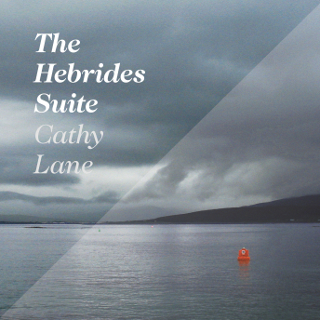
 |
|
 |
Format: CD Label & Cat.Number: Gruenrekorder GRUEN 127 Release Year: 2013 Note: a kind of soundmap from the "Outer Hebrides", a group of islands 40 miles off the north-west coast of Scotland, using field recordings, interviews with old Gaelic /Celtic speaking inhabitants, and oral history material from existing archives... this forms an impressive audio portrait of the life on these secluded islands, and the question how history (events & people) can leave sonic traces in general..
Price (incl. 19% VAT): €13.00 More Info"How does history – past lives and past events- leave sonic traces and how can we hear them?The Hebrides Suite is the result of an attempt to answer this question and the culmination of composer Cathy Lane’s three decade long engagement with the Outer Hebrides. The Outer Hebrides form a 130-mile long archipelago about 40 miles off the north-west coast of Scotland. There are more than 200 islands but only a few are now inhabited. In the 2001 census the total population of the islands was 26,502. The best known of these islands are Barra (1078), Benbecula (1219), Berneray (136), North (1271), South Uist (1818) and Harris and Lewis (combined population 19,918). There has been an overall slow population decline in the islands over the last two hundred years, with peaks and troughs caused by economic and political fluctuations. In the 1840s poverty and famine lead to whole villages being evicted by landowners, often brutally, to make way for the higher profits of sheep farming. During these forced clearances many people took assisted passages to Canada and Australia and as far away as Patagonia and the Falkland Islands. In the twentieth and twenty first centuries much of the island lands are still owned by absentee landlords and the islanders’ struggles for self determination and economic and political control have continued. The Outer Hebrides are the most strongly coherent Scottish Gaelic (Gàidhlig) speaking area in the world. Gaelic is a Celtic language related to Welsh, Cornish and Breton. In 2001, 61.1% of the population of the Outer Hebrides spoke Gaelic (compared with 1.2% in the whole of Scotland). A handful of Gaelic speakers can be found in the United States, Canada and Australia most of whom are descended from nineteenth century emigrants. There is a strong Gaelic culture. Religion is also a significant factor in the life of the inhabitants of the islands. The southern islands of Benbecula, South Uist and Barra are predominantly Roman Catholic. In the northern islands, especially Harris and Lewis, the non-conformist Free Church of Scotland and the still more conservative Free Presbyterian Church of Scotland are very influential. There is a tradition of Sabbath observance and few shops or transport services are available on Sunday although this is increasingly contested. The emigration still continues, particularly among the young, as the islands offer few employment opportunities. Most present day commercial activities concern tourism, including heritage tourism; crofting; fishing and fish farming and weaving including the manufacture of Harris tweed, a cloth that has been handwoven by the islanders in their homes using pure virgin wool that has been dyed and spun in the Outer Hebrides. Each of the works in The Hebrides Suite uses a mixture of field recordings, interviews and oral history material from existing archives to explore aspects of island life past and present through the medium of composed sound." [label info] www.gruenrekorder.de "We cross the Atlantic again but go north, to the Outer Hebrides, a remote '130 mile long archipelago of islands about 40 miles off the north-west coast of Scotland'. Gruenrekorder has the previous two as part of their field recordings series, this one is in the 'soundscape series', so I assume that the material is not presented 'as is', but is used to compose a piece of music with this, with repeating blocks of sounds, mixes of various bits together, but with the overall idea that we stay in one place and we know more of the place. Cathy Lane does that in six pieces, all around nine to twelve minutes and each is about a certain aspect of the Hebrides, the wind, the sheep/the mill, life on the islands and such like. Sometimes, such as in 'Where Once Were Whales', about fishing, we also hear voices, talking about their trade, even when it's not always to understand what they are telling us, partly due to the dialect, partly due to the fact that the voices are layered. It perhaps adds to the mystique of the release? Unlike the other two, which are 'merely' audio travelogues, Lane actually composes with the material and makes some very strong compositions with it. Of the three releases, it's also the one which has the most documentation, explaining in detail what each piece is about. I quite enjoyed all three of these releases, but it was the Cathy Lane release that I especially enjoyed for it's more musical qualities. One to play again and again." [FdW/Vital Weekly] |
| © 2007 Drone Records | | Celler Strasse 33, 28205 Bremen, Germany | Privacy and cookies policy | Impressum / Allgemeine Geschaftsbedingungen / Haftungsausschluss | Links to the scene |